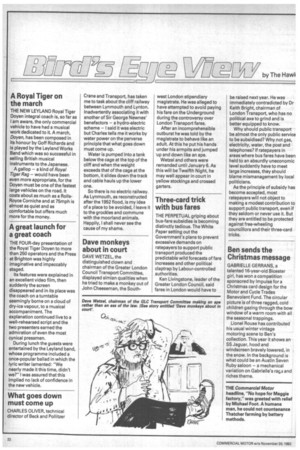What goes down must come up
Page 18

If you've noticed an error in this article please click here to report it so we can fix it.
CHARLES OLIVER, technical director of Beck and Pollitzer Crane and Transport, has taken me to task about the cliff railway between Lyn mouth and Lynton. Inadvertently associating it with another of Sir George Newnes' benefactors — a hydro-electric scheme — I said it was electric but Charles tells me it works by water power on the perverse principle that what goes down must come up.
Water is pumped into a tank below the cage at the top of the cliff and when the weight exceeds that of the cage at the bottom, it slides down the track and cable hauls up the lower one.
So there is no electric railway. As Lynmouth, as reconstructed after the 1952 flood, is my idea of a place to be avoided, I leave it to the grockles and commune with the moorland animals. Happily, I shall never see the cause of my shame.












































